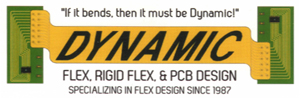Adhering to IPC standards for printed circuit board design can improve and contribute to the robustness, reliability and durability of the product. Also, used with other standards, it can reduce the levels of electromagnetic contamination and help pass the tests and certifications sold in international markets. It also helps design and manufacture a printed circuit board faster and with less expense, by learning from others’ experience.
What is IPC
A North American entity founded in 1957, the IPC (Association Connecting Electronics Industries), since 1995 has developed a series of standards for design, manufacturing, assembly, and testing.
It helps optimize the entire manufacturing process, reduce the market launch time, and obtain a better performing product. More than 3,500 companies are affiliated with the IPC, including Samsung, Motorola, and Siemens.
There are manufacturers such as Jabil, Sanmina, Flextronics, printed circuit board manufacturers, designers, consultants, students, engineers, technicians, assemblers and in general specialists in connecting electronics.
Why is printed circuit board designed with IPC standards important?
Additionally, when you want to certify products for export, following accepted standards and processes can help you create a product that is compatible where it operates or has EMC (Electromagnetic Compatibility). Also, when manufacturing or assembling electronic products, both in prototypes and in production volumes, standards help with time to market, reduce manufacturing errors, cost, and improve processing time.
IPC standards for PCB (printed circuit board design)
What is the norm or standard?
A norm or technical standard is a document based on science, technology, and experience, approved by a recognized national or international body. It establishes characteristics, requirements or specifications, to create a product, process or service in that meets those specifications.
Different organizations exist that certify that certain products, services or processes are in compliance, or meet international standards.
- What is the IPC, and what are the standards for PCB (design and manufacturing)
The IPC works on standardization, certification, education, professional development, market research, industry programs, regulations and industry recognition.
It provides prompt and timely information on market and technological trends, best practices, market research and industry reports, trade shows, technical conferences, etc.
- What are IPC standards, and what are they for?
IPC standards are a best practice guide for design, manufacture, assembly, and inspection of PCBs, cables, connectors, solder supplies, testing and much more. When followed, the standards signal the product’s/service’s/process’s high quality.
Designing and working according to IPC standards give the following benefits:
- Work with the best practices in the industry and according to your needs
- Commit and demonstrate the excellence of the company and people, gain recognition
- Help eliminate interpretation problems between manufacturers and users
- They make the exchange of information easier
- Help improve the products
- Reduce delays in product development
- Help design environment-oriented manufacturing
- Reduce time to market launch
- etc.
- IPC standards for designing printed circuit boards design
The following are standards most used in the design of PCBs.
- IPC 2220 standard for printed circuit boards design
IPC-2220 is the family of design standards to follow if someone wants to design a PCB, improve one that exists, teach design, or work while adhering to this standard.
- IPC 2221 standard for printed circuit boards design
The most commonly used IPC standard for printed circuit board design is the IPC-2221. It defines the general requirements for PCB design and some aspects of electronic card assembly, principles and recommendations.
It includes instructions on the assembly of components, type THT or hollow interns, and SMT surfaces. The IPC-2221 standard is widely used in conjunction with IPC-7351, IPC-T-50 and IPC-D-325.
